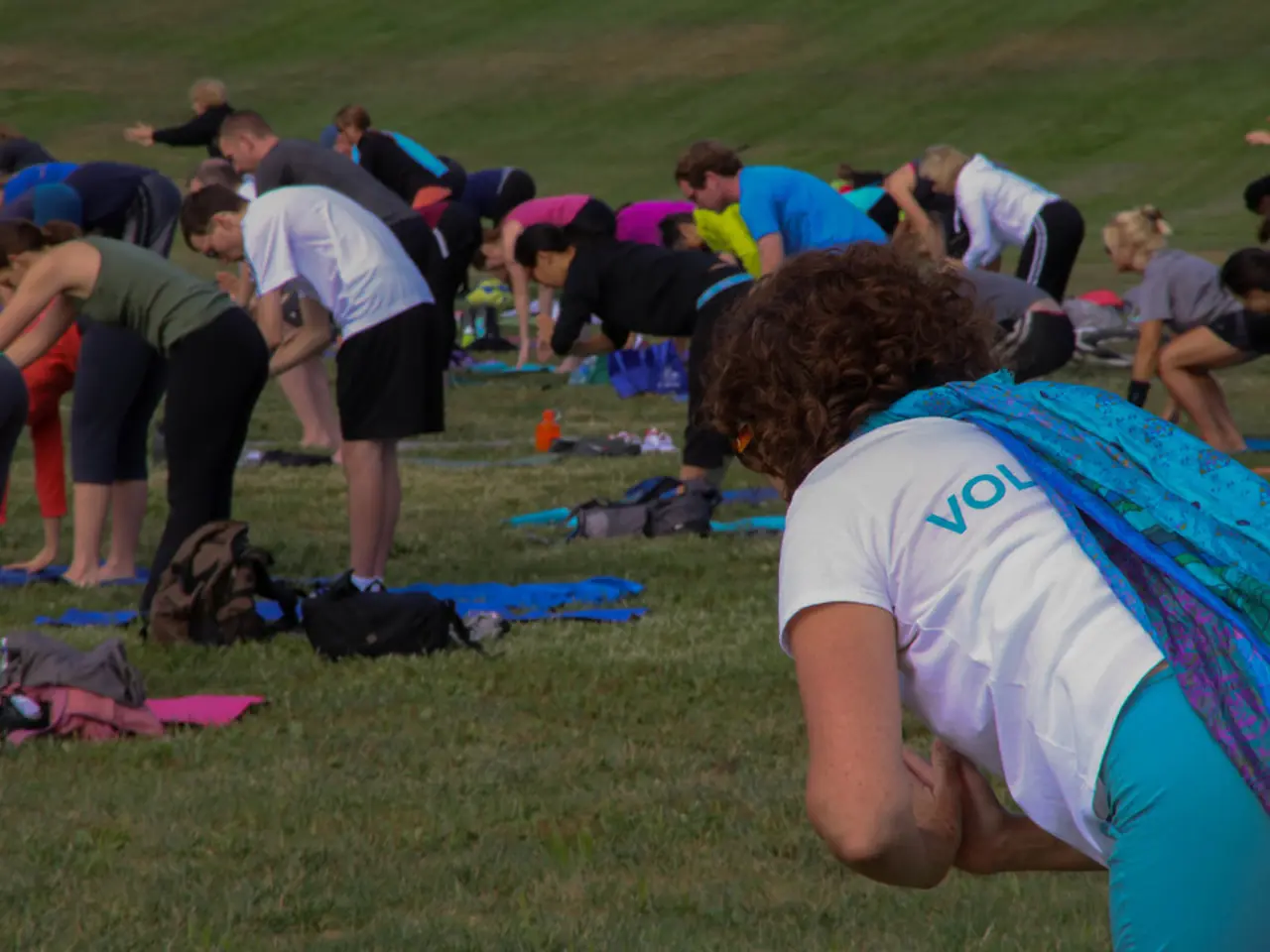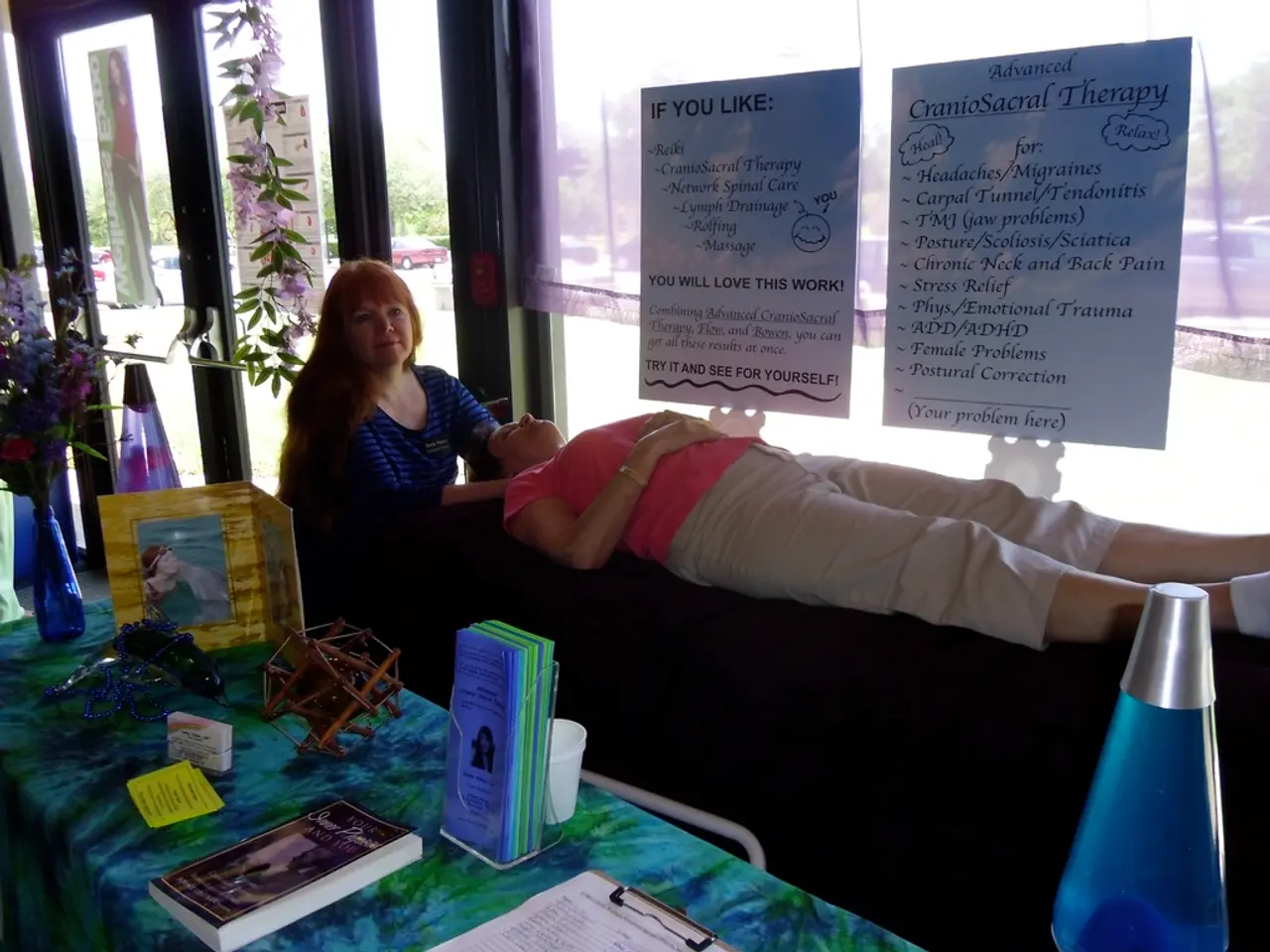Chemotherapy-induced skin alterations: Reasons, treatments, and additional insights
Chemotherapy, while an effective treatment for cancer, can have various side effects on a person's skin. Here's a guide to help navigate these changes and maintain skin health during treatment.
Skin Changes During Chemotherapy
Most skin changes caused by chemotherapy will resolve after treatment has finished. However, common side effects include dryness, itching, redness, peeling, rashes, increased sun sensitivity (photosensitivity), nail discoloration or damage, acneiform rash, and sores on skin or lips [1][3][4].
Photosensitivity
Photosensitivity is notable with certain chemotherapeutic drugs, causing exaggerated reactions to UV light like erythema, blistering, and pigment changes [2]. Acneiform rash and dry skin are especially common with targeted oral therapies that inhibit EGFR or VEGF pathways [3].
Prevention and Treatment
Preventive photoprotection and supportive skin care are critical during chemotherapy to minimize skin damage while maintaining quality of life [1][2][3]. To prevent photosensitive reactions, people should avoid sun exposure during peak UV hours (10 AM to 4 PM), wear protective clothing, and apply broad-spectrum sunscreen with at least SPF 50 [2][3].
Treatment for skin issues caused by chemotherapy involves wound care and using cold or heat packs [3]. Topical corticosteroids and oral antibiotics such as doxycycline may reduce inflammatory rashes [3]. Prompt management of nail changes and skin sores to avoid infection is also crucial [1].
Hand-Foot Syndrome
Chemotherapy can cause a condition known as hand-foot syndrome, or palmar-plantar erythrodysesthesia, characterized by symptoms including tingling, burning, itching, numbness, swelling, tender skin, rash, inflamed skin that looks similar to sunburn, ulcers, severe pain, difficulty walking, difficulty using the hands, wounds that heal slowly, sores, cracked, flaking, or peeling skin [1].
Prevention and Management
To prevent hand-foot syndrome, during chemotherapy, a person can use ice packs or use frozen gloves and socks to cool the hands and feet [4]. Home remedies for hand-foot syndrome include applying ice packs wrapped in a towel to the affected area, elevating the hands and feet, patting the skin dry, using moisturizers, wearing slippers or other loose, well-ventilated shoes, avoiding harsh chemicals, using 10% urea cream, talking to a doctor about taking pain relievers, such as acetaminophen [4].
Mouth Sores
Mouth sores, caused by certain chemotherapy drugs, can make it difficult or painful to eat and drink, potentially leading to weight loss and dehydration [4]. To help ease mouth sore symptoms, a person can use a soft toothbrush, rinse the mouth with salt and baking soda, use antiseptic and antifungal mouthwashes, and suck on ice chips [4].
Before Starting Chemotherapy
Before starting chemotherapy, people should ask their doctor about what to expect and use gentle skin products, moisturize the skin regularly, protect skin from the sun, prevent hand-foot syndrome, prevent dry and itchy skin, and prevent infections [5]. A healthcare professional may recommend using creams and lotions to help keep the skin moisturized [5].
Avoiding Skin Irritation
It's important to note that irritated skin can become infected. As a result, a person should ask a healthcare provider about special lotions and creams to help severely dry skin [1]. Ingredients in skin products to avoid include alcohol or fragrances, as these substances can further dry the skin and cause itchiness [6].
Conclusion
While chemotherapy can cause various skin changes, understanding these side effects and taking preventative measures can help maintain skin health during treatment. It's essential to discuss any concerns with a healthcare professional and follow their advice for managing these changes effectively.
- Mouth sores, a potential side effect of certain chemotherapy drugs, may cause difficulties in eating and drinking, leading to weight loss and dehydration.
- Preventive photoprotection and supportive skincare are critical during chemotherapy to minimize skin damage and maintain quality of life.
- Skin changes caused by chemotherapy include mouth ulcers, rash, dryness, itching, redness, peeling, increased sun sensitivity, acneiform rash, and sores on skin or lips.
- Nondigestive ulcers, such as those in the form of hand-foot syndrome, can cause symptoms like tingling, burning, itching, swelling, tender skin, rash, and painful difficulties in walking or using the hands.
- To avoid skin irritation during chemotherapy, it's advisable to avoid products containing alcohol or fragrances and use gentle skin products, moisturize regularly, and protect skin from the sun.




